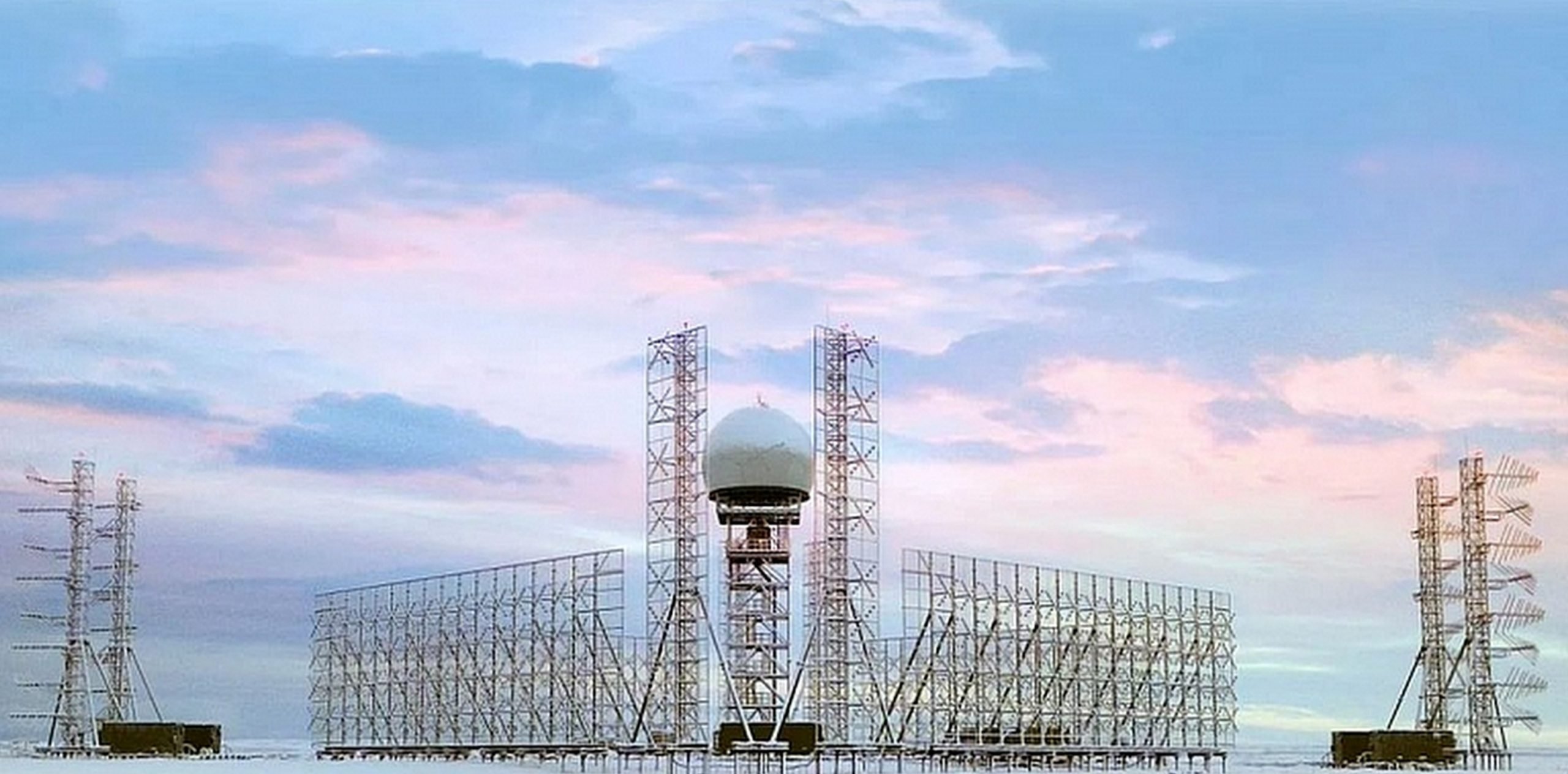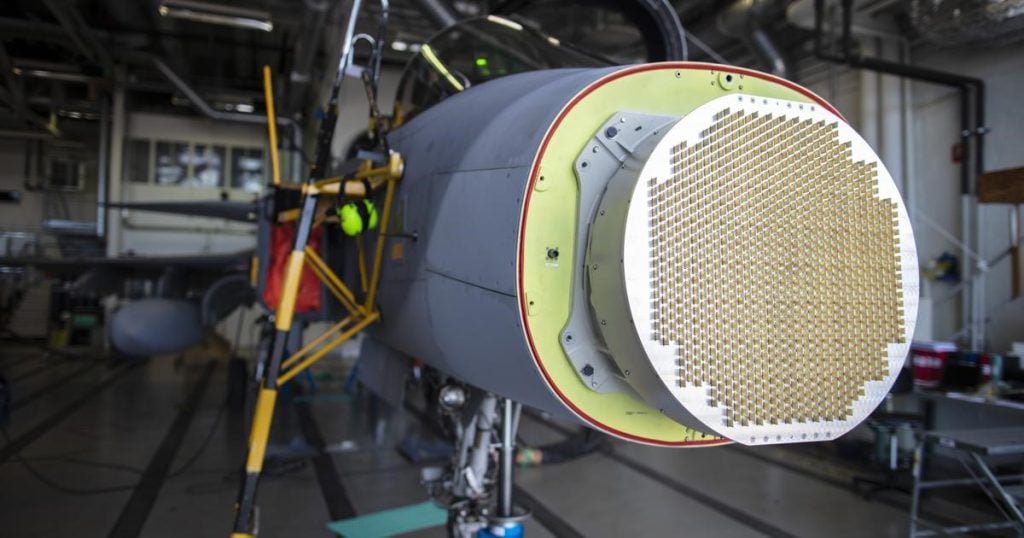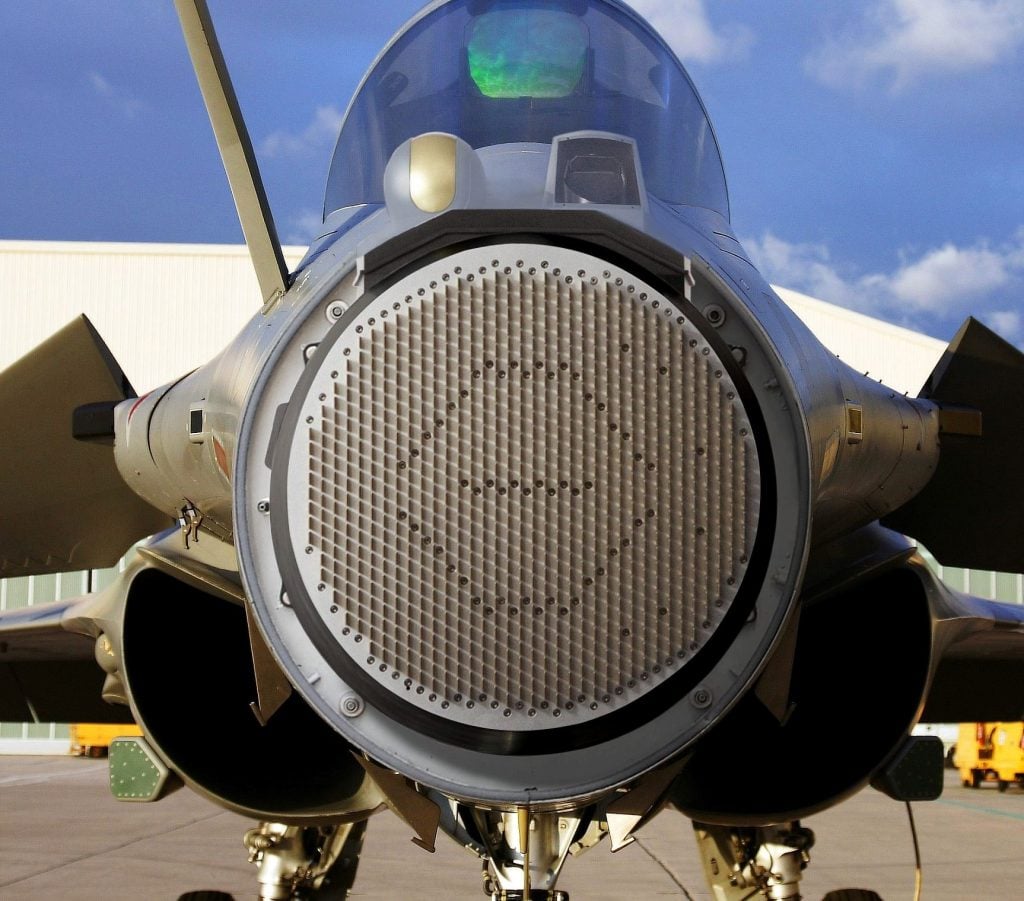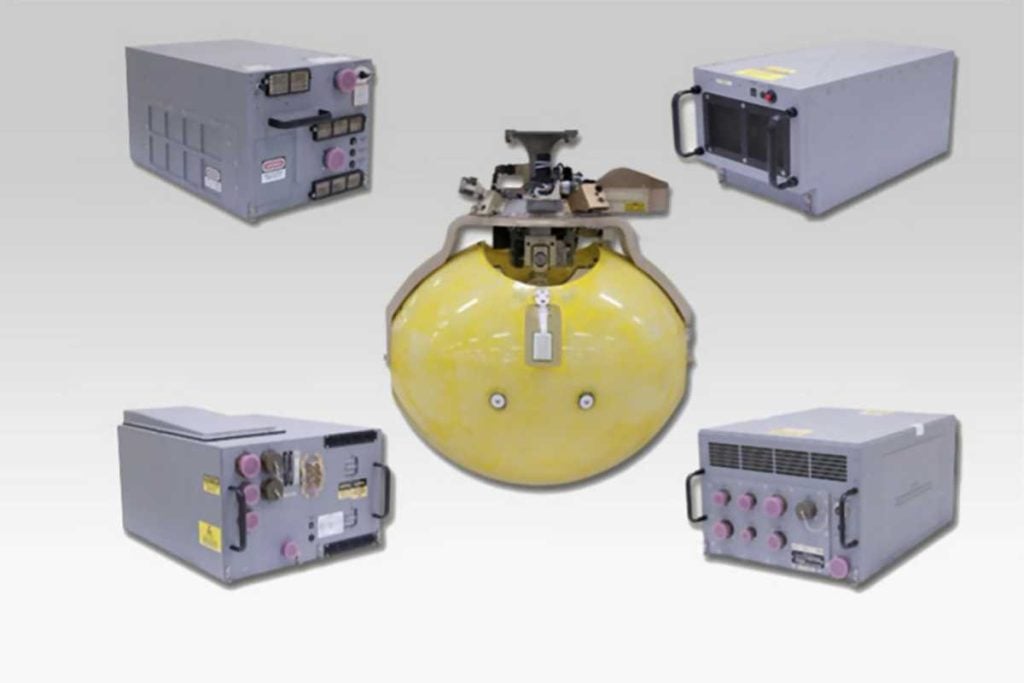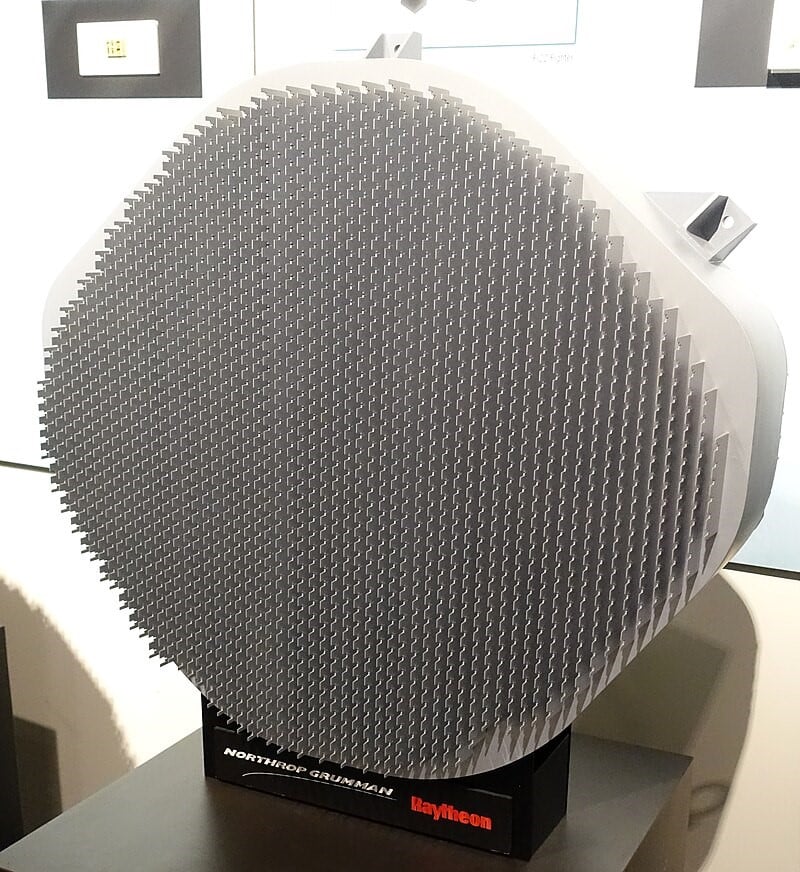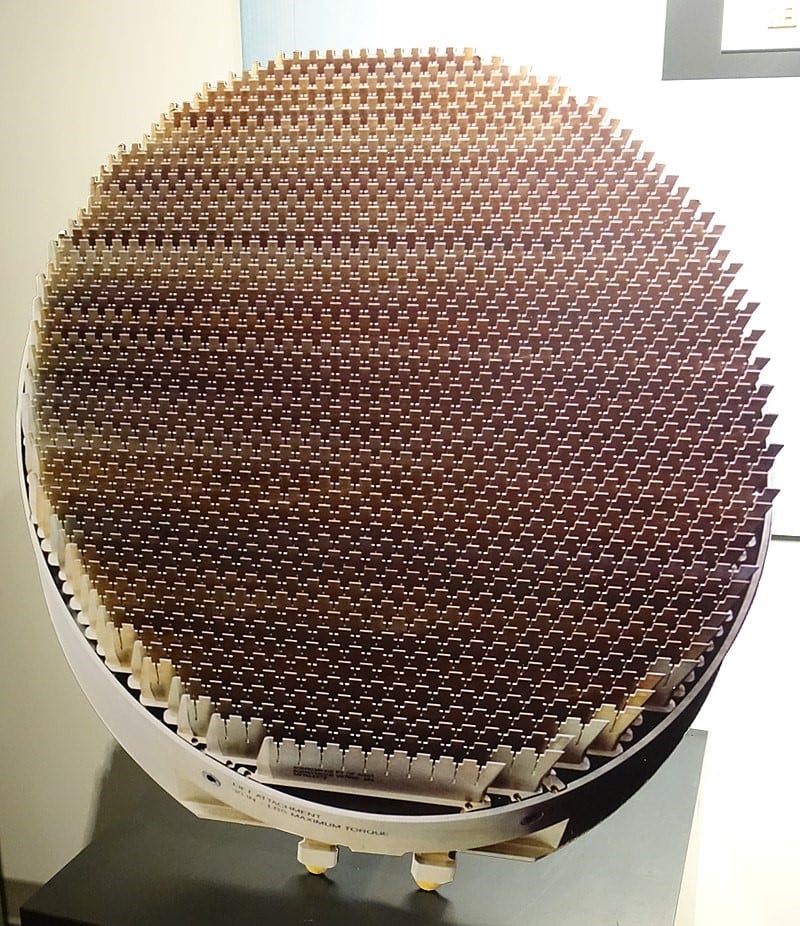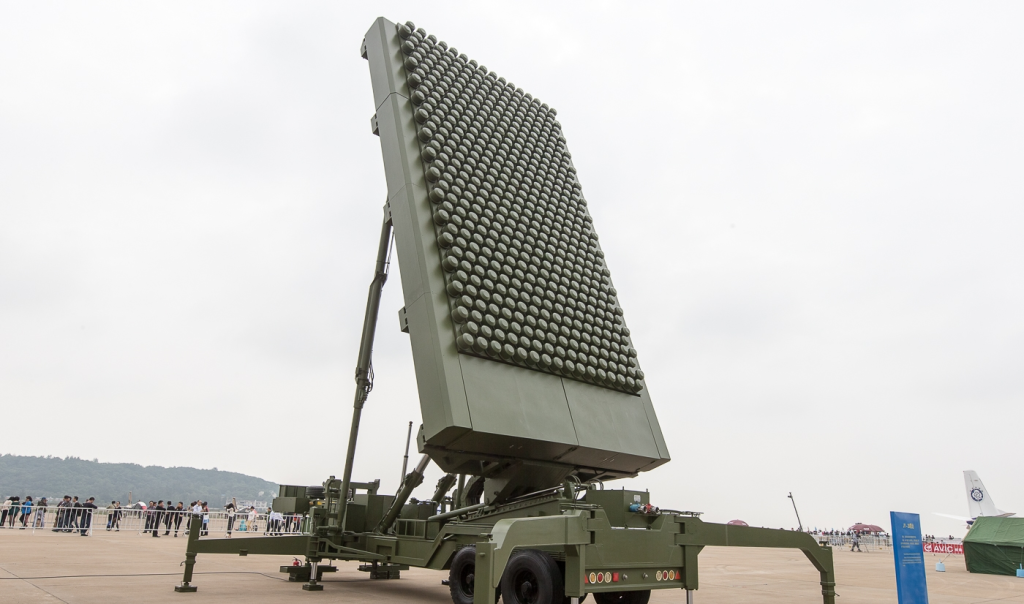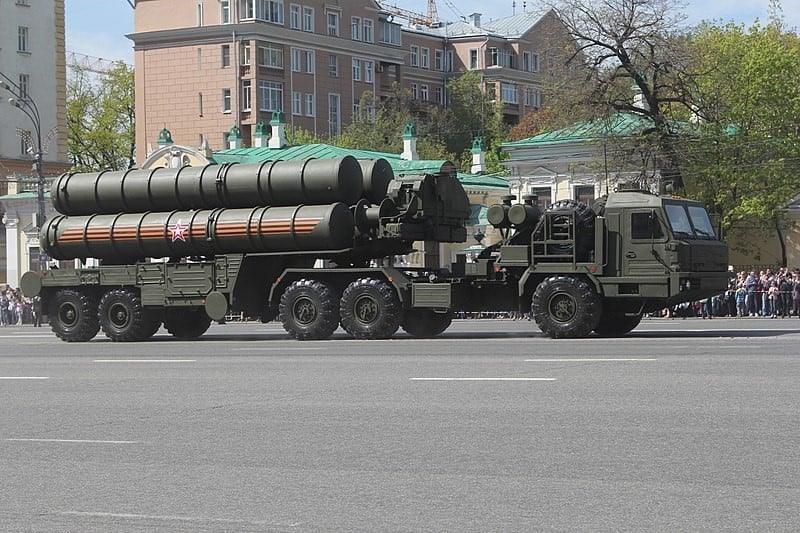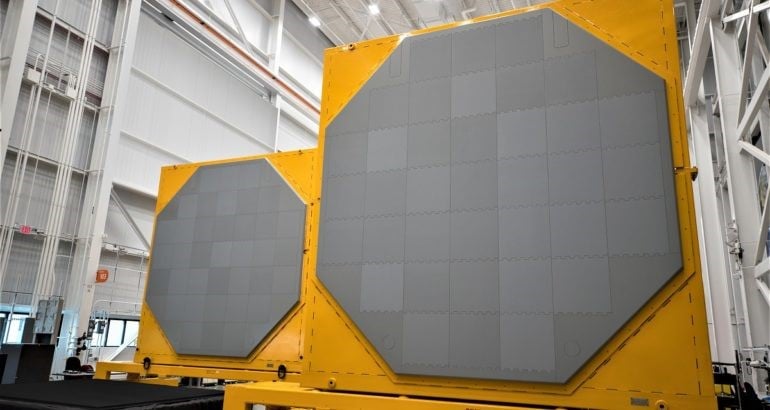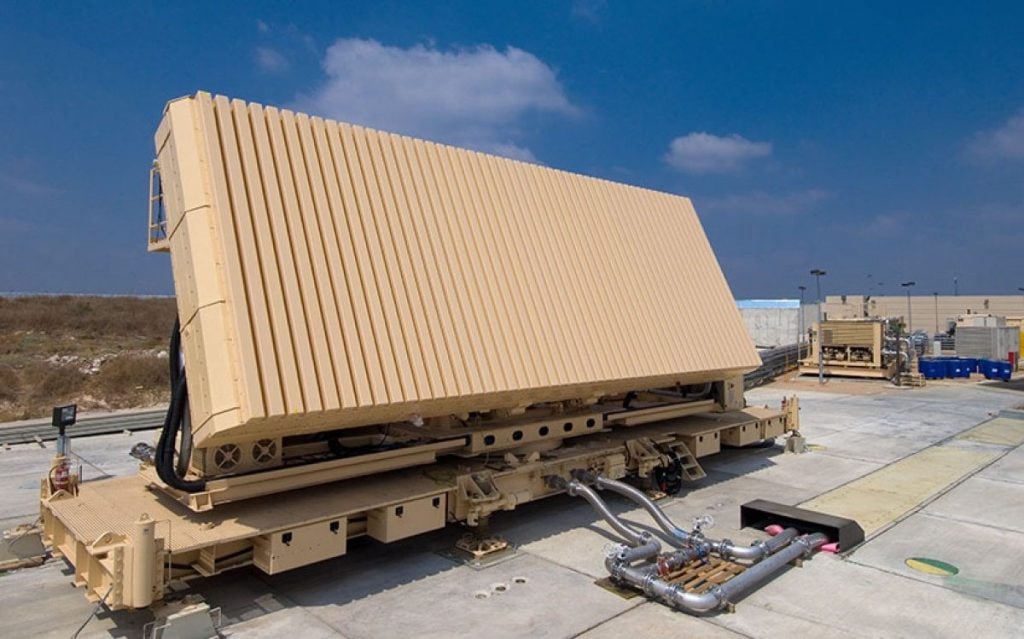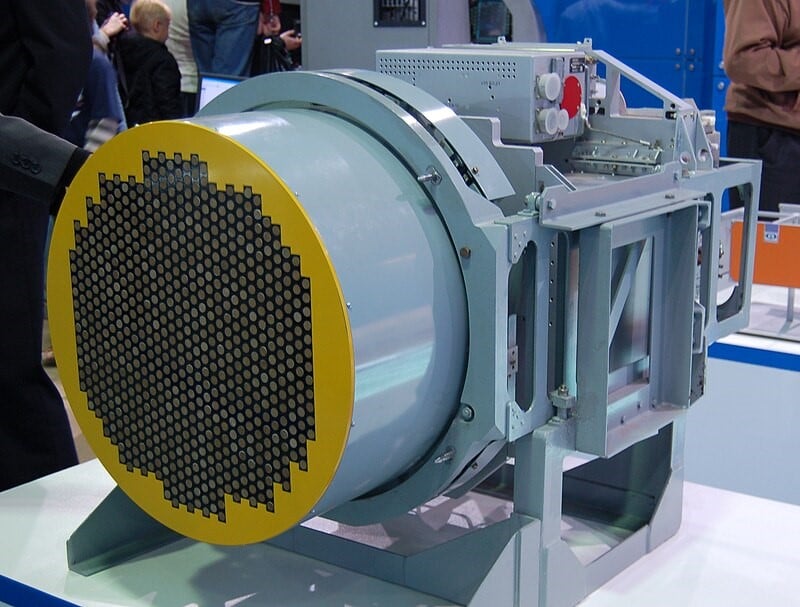In the dynamic and ever-evolving world of aviation and defense, the significance of advanced radar technology cannot be overstated. As the skies grow increasingly crowded and the demands on air traffic control become more stringent, the need for sophisticated radar systems that can maintain airspace security and navigational accuracy has become paramount. This article delves into the realm of the 10 Most Advanced Radars in the World 2024, providing a comprehensive ranking and analysis to help enthusiasts, professionals, and casual observers alike understand the cutting-edge capabilities that are shaping the future of this critical technology.
10 Largest Navies in the World 2024
1. Gallium Nitride (GaN) AESA Radar Technology
At the forefront of radar innovation stands the Gallium Nitride (GaN) based Active Electronically Scanned Array (AESA) radar technology. This revolutionary advancement in radar design offers unparalleled performance for military applications, delivering superior capabilities in areas such as high power output, efficiency, and reliability. GaN AESA radars, with their ability to rapidly steer the radar beam electronically without the need for mechanical movement, have become the gold standard for modern military aviation, providing enhanced targeting, tracking, and situational awareness for fighter jets and other military platforms.
Advantages of GaN AESA Radar Technology
- Exceptional power output and efficiency: GaN-based semiconductor materials enable radar systems to generate higher power levels with greater energy efficiency, translating to improved range, sensitivity, and target detection capabilities.
- Rapid beam steering: The active electronically scanned array (AESA) design allows the radar beam to be electronically steered, enabling faster target acquisition and tracking without the limitations of mechanical systems.
- Increased reliability and longevity: GaN components are inherently more durable and resistant to environmental stresses, improving the overall reliability and service life of the radar system.
- Enhanced multi-target tracking: The advanced signal processing capabilities of GaN AESA radars allow them to simultaneously track and engage multiple targets, a critical feature for modern air combat and air defense operations.
Applications of GaN AESA Radar Technology
GaN AESA radar systems are primarily used in military aircraft, such as the F-22 Raptor and F-35 Lightning II, where their performance and capabilities are essential for maintaining air superiority and ensuring mission success. These radars are also finding applications in ground-based air defense systems, naval vessels, and even space-based platforms, showcasing their versatility and adaptability to a wide range of defense and security requirements.
2. The RBE2-AA
Complementing the advancements in GaN AESA radar technology, the RBE2-AA radar system, developed by France, has emerged as a standout performer in the realm of multirole fighter aircraft. Equipping the renowned Rafale fighter jet, the RBE2-AA radar enhances the aircraft’s capabilities across a wide spectrum of air-to-air and air-to-ground missions, leveraging the power and precision of AESA technology.
Key Features of the RBE2-AA Radar
- Advanced AESA architecture: The RBE2-AA radar utilizes an active electronically scanned array design, providing exceptional beam steering capabilities and improved target tracking performance.
- Multirole versatility: The radar’s advanced signal processing and targeting algorithms enable it to seamlessly transition between air-to-air and air-to-ground modes, ensuring mission flexibility for the Rafale fighter.
- Increased situational awareness: The RBE2-AA’s ability to simultaneously track multiple targets and share data with other onboard sensors enhances the Rafale’s overall situational awareness and decision-making capabilities.
- Improved electronic warfare capabilities: The radar’s advanced electronic countermeasures and jamming resistance features help the Rafale maintain a tactical edge in contested airspace.
Operational Deployment of the RBE2-AA Radar
The RBE2-AA radar has been a crucial component of the Rafale fighter jet, which has seen widespread deployment by the French Air Force and Navy, as well as several international customers. The combination of the Rafale’s airframe and the RBE2-AA radar has proven to be a formidable force in both air-to-air and air-to-ground operations, showcasing the French aerospace industry’s commitment to developing cutting-edge radar technology.
3. The AN/APY-10
Shifting the focus to maritime domain awareness, the AN/APY-10 radar system has emerged as a versatile and capable solution for the P-8A Poseidon, a multimission maritime patrol and reconnaissance aircraft operated by the United States Navy and several international partners.
Capabilities of the AN/APY-10 Radar
- Comprehensive surface search: The AN/APY-10 radar is designed to provide extensive coverage and detection of maritime targets, including ships, submarines, and surface vessels, enhancing the P-8A’s ability to monitor and respond to threats in the maritime environment.
- Diverse mission support: In addition to its surface search capabilities, the AN/APY-10 radar can also support a range of other missions, such as overland surveillance, weather monitoring, and even limited air-to-air tracking, making it a highly adaptable and valuable asset for the P-8A platform.
- Integrated sensor suite: The AN/APY-10 radar seamlessly integrates with the P-8A’s comprehensive suite of sensors, including electro-optical and infrared systems, to provide a comprehensive and holistic understanding of the operational environment.
- Reliability and maintainability: The radar’s design emphasizes reliability and ease of maintenance, ensuring that the P-8A can maintain a high operational tempo and availability for its critical maritime patrol and reconnaissance missions.
Operational Deployment of the AN/APY-10 Radar
The AN/APY-10 radar has been a key component of the P-8A Poseidon aircraft, which has been widely adopted by the United States Navy and several international partners, including Australia, India, the United Kingdom, and Norway. The radar’s versatility and performance have been instrumental in the P-8A’s ability to effectively carry out a wide range of maritime surveillance, anti-submarine warfare, and intelligence, surveillance, and reconnaissance (ISR) missions.
4. The AN/APG-77
Turning our attention to the realm of air superiority, the AN/APG-77 radar system has been a critical component of the Lockheed Martin F-22 Raptor, one of the most advanced and capable fighter jets in the world.
Capabilities of the AN/APG-77 Radar
- Stealth and Agility: The AN/APG-77’s active electronically scanned array (AESA) design, combined with the F-22’s aerodynamic prowess, enables the aircraft to maintain a low radar cross-section and enhanced maneuverability, making it a formidable adversary in air-to-air combat.
- Advanced Target Tracking: The radar’s sophisticated signal processing and target recognition algorithms allow it to simultaneously track multiple targets with exceptional precision, providing the F-22 pilot with a comprehensive understanding of the tactical situation.
- Situational Awareness: The AN/APG-77’s integrated sensor suite, which includes infrared and electronic warfare capabilities, enhances the F-22’s overall situational awareness, enabling the pilot to make informed decisions and respond effectively to evolving threats.
- Improved Targeting and Engagement: The radar’s advanced targeting and fire control functions enable the F-22 to engage enemy aircraft and ground targets with precision and lethality, further reinforcing its air superiority dominance.
Operational Deployment of the AN/APG-77 Radar
The AN/APG-77 radar has been a key component of the F-22 Raptor, which has been in service with the United States Air Force since the early 2000s. The radar’s performance and integration with the aircraft’s other systems have been instrumental in the F-22’s ability to maintain air superiority and deliver decisive air-to-air and air-to-ground capabilities in support of various military operations.
5. The AN/APG-81
Complementing the air superiority prowess of the F-22 Raptor is the F-35 Lightning II, a multirole fighter jet that has been equipped with the advanced AN/APG-81 radar system, further expanding the boundaries of modern aerial warfare.
Capabilities of the AN/APG-81 Radar
- Multirole Versatility: The AN/APG-81 radar is designed to support a wide range of air-to-air and air-to-ground missions, enabling the F-35 to seamlessly transition between different operational requirements and maintain a tactical edge in complex and dynamic environments.
- Exceptional Target Tracking: The radar’s advanced signal processing and target recognition algorithms allow it to simultaneously track and engage multiple airborne and ground-based targets, enhancing the F-35’s overall lethality and effectiveness.
- Integrated Sensor Fusion: The AN/APG-81 radar seamlessly integrates with the F-35’s comprehensive suite of sensors, including infrared, electro-optical, and electronic warfare systems, to provide the pilot with a comprehensive and unified understanding of the battlespace.
- Stealth and Survivability: The radar’s design, combined with the F-35’s low-observable characteristics, helps to minimize the aircraft’s radar cross-section, improving its stealth capabilities and increasing its chances of survival in contested airspace.
Operational Deployment of the AN/APG-81 Radar
The AN/APG-81 radar has been a key component of the F-35 Lightning II, which has been adopted by the United States and several international partners, including the United Kingdom, Italy, Japan, and Australia, among others. The radar’s performance and integration with the aircraft’s other systems have been instrumental in the F-35’s ability to execute a wide range of air-to-air, air-to-ground, and intelligence, surveillance, and reconnaissance (ISR) missions, solidifying its position as a highly capable and versatile multirole fighter.
12 Top Navy Destroyers in the World 2024
6. The JY-26 Skywatch-U
Shifting the focus to the global landscape, the JY-26 Skywatch-U radar system, developed by China, has emerged as a formidable player in the realm of air surveillance and defense.
Capabilities of the JY-26 Skywatch-U Radar
- Long-Range Detection: The JY-26 Skywatch-U is a long-range air surveillance radar system capable of detecting and tracking a wide range of aerial targets, including aircraft, missiles, and even stealthy platforms.
- Stealth Target Acquisition: One of the standout features of the JY-26 Skywatch-U is its ability to detect and track stealthy aircraft, a capability that is crucial in the modern era of advanced military aviation.
- Comprehensive Air Defense: The radar’s data can be integrated with other air defense systems, such as surface-to-air missile batteries, to provide a comprehensive and layered air defense network for the protection of critical assets and population centers.
- Adaptability and Mobility: The JY-26 Skywatch-U radar system is designed to be highly mobile and adaptable, allowing it to be rapidly deployed and reconfigured to meet the evolving needs of air defense operations.
Operational Deployment of the JY-26 Skywatch-U Radar
The JY-26 Skywatch-U radar has been a key component of China’s air defense strategy, with the system being deployed in various locations across the country. The radar’s long-range detection and stealth target acquisition capabilities have been instrumental in enhancing China’s ability to monitor and respond to potential airborne threats, underscoring the country’s commitment to developing advanced radar technology.
7. The S-400 Triumf
Continuing the global perspective, the radar components of the S-400 Triumf (NATO reporting name: SA-21 Growler) air defense system, developed by Russia, have emerged as some of the most advanced and capable ground-based radar systems in the world.
Capabilities of the S-400 Triumf Radar Systems
- Multitarget Tracking and Engagement: The S-400 Triumf’s radar systems are capable of simultaneously tracking and engaging multiple airborne targets, including aircraft, missiles, and unmanned aerial vehicles, demonstrating its versatility and lethality in air defense operations.
- Long-Range Detection and Targeting: The radar’s impressive range and accuracy allow it to detect, identify, and engage threats at considerable distances, providing a robust and comprehensive air defense coverage.
- Adaptability and Integration: The S-400 Triumf’s radar systems are designed to be highly adaptable, with the ability to integrate with other air defense assets and share data to create a cohesive and integrated air defense network.
- Resistance to Electronic Warfare: The radar systems incorporate advanced electronic countermeasures and jamming resistance features, enhancing their resilience in contested electromagnetic environments.
Operational Deployment of the S-400 Triumf Radar Systems
The S-400 Triumf air defense system, including its sophisticated radar components, has been widely adopted by the Russian military and has also been exported to several international customers, such as China, India, and Turkey. The system’s proven performance and capabilities have made it a formidable deterrent against airborne threats, underscoring Russia’s commitment to developing cutting-edge air defense technologies.
8. The AN/SPY-6
Shifting the focus to naval warfare, the AN/SPY-6 radar system has emerged as the United States Navy’s latest and most advanced radar, designed to provide comprehensive air and missile defense capabilities for surface warships.
Capabilities of the AN/SPY-6 Radar
- Enhanced Sensitivity and Tracking: The AN/SPY-6 radar’s advanced signal processing and target identification algorithms allow it to detect and track a wide range of air and missile threats with exceptional accuracy and sensitivity.
- Scalable and Modular Design: The radar’s modular architecture enables it to be tailored to the specific requirements of different ship classes, ensuring optimal performance and integration across the Navy’s surface fleet.
- Improved Interoperability: The AN/SPY-6 radar seamlessly integrates with the Navy’s broader combat management and fire control systems, enhancing the overall effectiveness of the ship’s air and missile defense capabilities.
- Increased Reliability and Availability: The radar’s design emphasizes reliability and maintainability, ensuring that it can maintain a high operational tempo and provide continuous air and missile defense coverage for naval vessels.
Operational Deployment of the AN/SPY-6 Radar
The AN/SPY-6 radar has been selected as the primary air and missile defense radar for the U.S. Navy’s next-generation surface warships, including the Arleigh Burke-class destroyers and the future Constellation-class frigates. The radar’s advanced capabilities and integration with the Navy’s combat systems are expected to play a crucial role in maintaining maritime superiority and protecting naval assets in the face of evolving air and missile threats.
9. The EL/M-2080 Green Pine
Turning our attention to the realm of ballistic missile defense, the EL/M-2080 Green Pine radar system, developed by Israel, has emerged as a critical component of the country’s multi-layered air defense architecture.
Capabilities of the EL/M-2080 Green Pine Radar
- Long-Range Ballistic Missile Detection: The EL/M-2080 Green Pine radar is specifically designed to detect and track long-range ballistic missile threats, providing early warning and targeting data for the Arrow missile defense system.
- Precision Tracking and Engagement: The radar’s advanced signal processing and targeting algorithms enable it to accurately track and engage multiple ballistic missile targets, enhancing the overall effectiveness of the Arrow system.
- Adaptability and Mobility: The EL/M-2080 Green Pine radar is designed to be highly mobile and adaptable, allowing it to be rapidly deployed and reconfigured to meet the evolving needs of ballistic missile defense operations.
- Resilience in Contested Environments: The radar incorporates advanced electronic countermeasures and hardening features to ensure its continued operation in the face of electronic warfare and other threats.
Operational Deployment of the EL/M-2080 Green Pine Radar
The EL/M-2080 Green Pine radar has been a critical component of Israel’s Arrow missile defense system, which is designed to protect the country from long-range ballistic missile threats. The radar’s performance and integration with the broader air defense architecture have been instrumental in enhancing Israel’s ability to detect, track, and intercept incoming ballistic missile attacks, reinforcing the country’s commitment to safeguarding its national security.
10. The Zhuk-AE/FGA-50
Returning to the realm of modern fighter aircraft, the Zhuk-AE/FGA-50 radar system, developed by Russia, has been integrated into the MiG-35 multirole fighter, showc asing the country’s advancements in active electronically scanned array (AESA) radar technology.
Capabilities of the Zhuk-AE/FGA-50 Radar
The Zhuk-AE/FGA-50 radar boasts a range of impressive capabilities that enhance the performance of the MiG-35 fighter jet. Its advanced AESA architecture provides exceptional targeting and tracking abilities, allowing the aircraft to engage multiple airborne and ground-based targets with precision. The radar’s sophisticated signal processing algorithms enable it to effectively filter out clutter and interference, ensuring accurate target identification and engagement.
Additionally, the Zhuk-AE/FGA-50 radar’s electronic warfare countermeasures and jamming resistance features help the MiG-35 maintain a tactical advantage in contested airspace. The radar’s ability to seamlessly integrate with the aircraft’s other onboard sensors, such as infrared and electro-optical systems, further enhances the MiG-35’s overall situational awareness and mission effectiveness.
Operational Deployment of the Zhuk-AE/FGA-50 Radar
The Zhuk-AE/FGA-50 radar has been a key component of the MiG-35 fighter jet, which has been adopted by the Russian Air Force and several international customers. The radar’s performance and integration with the MiG-35’s advanced avionics and weapons systems have been instrumental in positioning the aircraft as a formidable multirole fighter, capable of executing a wide range of air-to-air and air-to-ground missions with a high degree of precision and lethality.
The Future of Radar Technology
As the world of radar technology continues to evolve, several emerging trends and innovations are shaping the future of this critical field. These advancements promise to further enhance the capabilities and versatility of radar systems, ensuring their continued relevance in an increasingly complex and dynamic operational environment.
Artificial Intelligence and Machine Learning
The integration of artificial intelligence (AI) and machine learning (ML) algorithms into radar systems is a rapidly growing trend. These advanced technologies enable radars to autonomously adapt to changing conditions, optimize their performance, and make real-time decisions based on the analysis of vast amounts of sensor data. AI-powered radars can learn from their experiences, improving their target detection, tracking, and identification capabilities over time.
Sensor Fusion and Integrated Systems
The concept of sensor fusion, where radar systems are seamlessly integrated with other sensors and systems, is gaining traction. By combining data from multiple sources, such as electro-optical, infrared, and electronic warfare sensors, radar systems can create a more comprehensive and accurate picture of the operational environment. This integration enhances situational awareness, improves decision-making, and enables more effective response to a wide range of threats.
Quantum Technologies
The development of quantum-based radar systems is an emerging field that holds significant promise for the future. Quantum radar technologies leverage the unique properties of quantum mechanics, such as entanglement and superposition, to achieve enhanced sensitivity, improved target detection, and resistance to electronic countermeasures. As these quantum-based systems mature, they have the potential to revolutionize the way radar operates, offering unprecedented capabilities in a variety of applications.
Advanced Materials and Manufacturing
The continued advancements in materials science and manufacturing processes are also shaping the future of radar technology. The use of innovative materials, such as gallium nitride (GaN) and other wide-bandgap semiconductors, is enabling the development of more efficient, compact, and powerful radar systems. Additionally, advancements in additive manufacturing and other advanced production techniques are allowing for the creation of complex and customized radar components, further enhancing their performance and versatility.
Cybersecurity and Resilience
As radar systems become increasingly integrated into complex networks and digital ecosystems, the importance of robust cybersecurity measures has become paramount. Radar developers are focusing on enhancing the resilience of their systems against cyber threats, incorporating advanced encryption, authentication, and intrusion detection capabilities to ensure the integrity and availability of critical radar data and functions.
These emerging trends and innovations are poised to drive the next generation of radar technology, offering enhanced capabilities, improved performance, and greater adaptability to meet the evolving needs of both civilian and military applications. As the world continues to grapple with complex security challenges and the demands on air traffic control and airspace management continue to grow, the advancements in radar technology will play a pivotal role in shaping the future of aviation, defense, and beyond.
Top 11 Safest Cars Used by World Leaders
Conclusion
The realm of advanced radar technology is a constantly evolving landscape, marked by continuous innovation and the pursuit of ever-greater capabilities. From the cutting-edge GaN AESA radar systems to the sophisticated ground-based air defense radars and the versatile maritime patrol radars, the examples highlighted in this article showcase the remarkable advancements that are shaping the future of this critical field.
As the skies grow increasingly crowded and the demands on air traffic control and airspace security become more stringent, the significance of having sophisticated radar systems cannot be overstated. These advanced radar technologies are not only instrumental in maintaining aviation safety and navigational accuracy but also play a crucial role in national defense, maritime domain awareness, and a wide range of other applications.
The ongoing research and development in areas such as artificial intelligence, sensor fusion, quantum technologies, and advanced materials are poised to drive the next generation of radar systems, offering even greater capabilities and adaptability to meet the evolving challenges of the modern world. As these innovations continue to unfold, it is clear that the future of radar technology holds immense promise, with the potential to transform the way we perceive, understand, and interact with our surroundings.
FAQs
Q1: What is the most advanced radar technology currently available?
The most advanced radar technology available is the Gallium Nitride (GaN) based Active Electronically Scanned Array (AESA) radar systems. These radars offer superior performance, efficiency, and reliability, making them the gold standard for modern military aviation.
Q2: What are the key advantages of GaN AESA radar technology?
The key advantages of GaN AESA radar technology include high power output, energy efficiency, rapid beam steering, increased reliability, and enhanced multi-target tracking capabilities.
Q3: Which radar system is used on the Rafale fighter jet?
The Rafale fighter jet is equipped with the RBE2-AA radar system, a French-developed AESA radar that enhances the aircraft’s multirole capabilities across air-to-air and air-to-ground missions.
Q4: What is the primary function of the AN/APY-10 radar on the P-8A Poseidon?
The AN/APY-10 radar on the P-8A Poseidon is primarily designed for comprehensive surface search and detection of maritime targets, such as ships, submarines, and surface vessels, supporting the aircraft’s maritime patrol and reconnaissance missions.
Q5: How do the radar systems of the S-400 Triumf air defense system contribute to its capabilities?
The radar components of the S-400 Triumf air defense system are among the most advanced ground-based radar systems, enabling the S-400 to simultaneously track and engage multiple airborne targets, including aircraft, missiles, and unmanned aerial vehicles.
